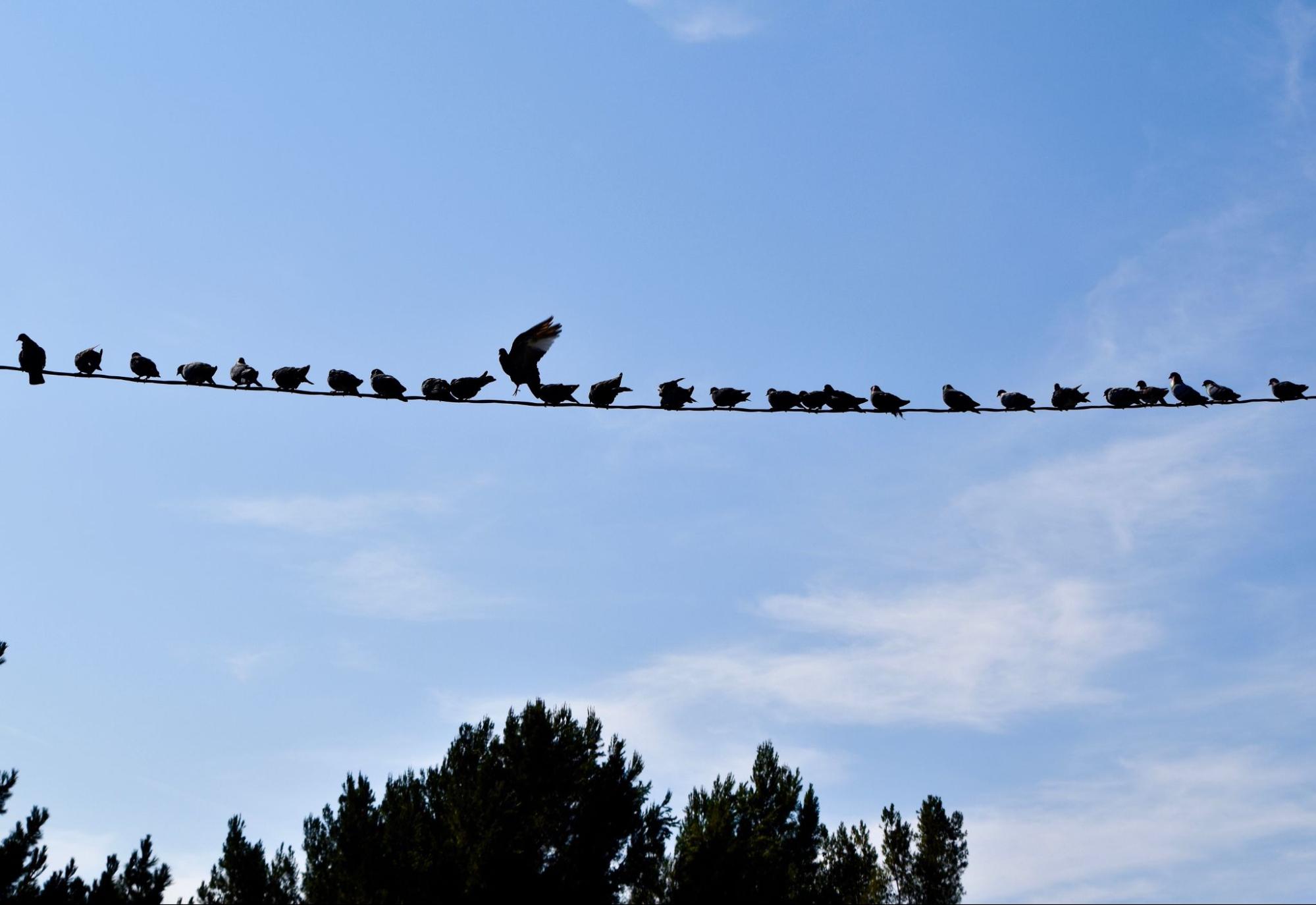
Bird spikes create a physical barrier that stops birds from landing, nesting, or roosting on exposed surfaces. Installing them on roof edges, signage, ledges, and utility equipment helps prevent damage caused by droppings, blocked drainage, and structural wear. These spikes are effective for high-traffic areas that birds commonly target for shelter or elevation. Using them in the right locations protects building materials, preserves their visual appeal, and reduces the need for cleaning and maintenance work. Strategic placement yields better coverage and more lasting results.
Why Use Bird Control Spikes
Bird control spikes are designed to prevent birds from landing or nesting on exposed surfaces. Their presence disrupts common roosting zones without harming birds or damaging structures. Placing bird spikes in specific areas can:
Stop Birds From Roosting and Nesting
Bird spikes make surfaces uncomfortable for birds to settle on. Their angled design forces birds to find other resting places, preventing the buildup of nests on rooftops, ledges, and beams. Roosting is interrupted before it causes problems with droppings and debris.
Reduce Structural Damage
Bird droppings corrode materials like metal, stone, and painted surfaces. Nesting debris can also block vents and downspouts. These conditions accelerate wear and lead to costly repairs. Spikes help protect against early deterioration.
Limit Health Risks Caused by Droppings
Bird waste can carry bacteria and parasites that spread through the air or contact. Surfaces near walkways and ventilation systems are especially vulnerable. Installing spikes keeps birds away from these areas, reducing contamination on high-touch surfaces.
Decrease Maintenance and Cleaning Costs
Droppings, feathers, and nesting materials build up fast in active bird zones, increasing the need for pressure washing and repair. Bird spikes stop this buildup by keeping surfaces clear. Fewer messes mean fewer cleaning cycles.
Preserve Curb Appeal
Bird activity can stain awnings, signs, and decorative finishes. These marks make businesses and buildings appear neglected. Using spikes prevents visible buildup in prominent areas. Clean surfaces reflect better on property owners and commercial tenants.
Work in Harsh Outdoor Conditions
Bird spikes are built to resist rain, wind, and extreme temperatures. They stay effective without bending, breaking, or rusting. High-quality materials extend their lifespan across seasons. Outdoor use remains consistent, with minimal upkeep required.
Blend in With Building Design
Modern bird spikes are low-profile and can match different architectural styles. Some models are nearly invisible from street level. This allows protection without compromising design, enabling businesses and property owners to maintain visual appeal.
Adapt to Multiple Installation Points
Spikes fit on ledges, pipes, signage, lights, and HVAC equipment. Their flexible base conforms to curved and uneven surfaces. They can be glued, screwed, or clipped, depending on the material. Versatile placement allows full coverage in high-risk areas.
Areas Where Bird Control Spikes Can Be Used
Bird control spikes are effective across a wide range of structures and surfaces. Their versatility allows them to be installed on nearly any location birds use for perching or nesting. Placing them in the right areas prevents mess, damage, and repeated clean-up. Areas where you can place bird control spikes are:
Roof Edges and Ridges
These high points give birds a clear view and a safe place to land. Installing spikes along rooflines blocks access to ledges without affecting the structure. Nesting materials and droppings often accumulate in these areas, leading to long-term damage. Spikes deter birds from perching on shingles, tiles, and parapet walls. They help preserve the roof’s condition over time.
Window Ledges and Sills
Birds are drawn to window ledges for shelter and elevation. These flat surfaces often become stained and cluttered with droppings and feathers. Spikes stop birds from landing and creating a mess near windows. Clean windows improve the look of both homes and commercial buildings. This placement also helps reduce indoor air pollution by keeping windows open.
Signs and Storefront Lettering
Raised signage attracts birds seeking nesting spots among the letters. Droppings on signs damage branding and make businesses look neglected. Bird spikes can be installed discreetly behind or above lettering to prevent roosting. They preserve the sign’s visibility without affecting design, reducing cleaning frequency, and protecting materials from corrosion.
Chimneys and Vent Openings
Birds often target warm, enclosed areas like chimneys and vents. Nests in these spots block airflow and increase fire risks. Bird spikes prevent access while allowing proper ventilation. This keeps exhaust systems working without interruption and makes roof inspections and maintenance safer.
Gutters and Downspouts
Due to constant exposure, gutters are vulnerable to nesting and clogging. Blockages lead to overflow and water damage along walls and foundations. Installing spikes along gutter edges keeps birds from building nests inside. Water flows properly, and drainage systems stay functional. Property owners avoid frequent cleaning and repair costs.
Outdoor Lighting and Security Cameras
Lights and cameras are common perching spots due to their height and protection. Bird droppings can interfere with camera lenses and corrode metal fixtures. Spikes stop birds from using these points without blocking visibility or function. This maintains surveillance systems and lighting in good condition, improving safety and visibility at night.
Awnings and Canopies
These structures provide shelter, making them attractive to birds. Spikes along the top prevent birds from gathering and leaving droppings. Clean awnings make storefronts more inviting and reduce fabric damage. Long-term use also prevents discoloration and sagging. Businesses benefit from a cleaner entrance and fewer maintenance needs.
HVAC Units and Utility Equipment
Flat-topped outdoor units become landing zones for birds. Nesting materials and droppings can disrupt system function and shorten equipment life. Spikes stop birds from accessing vents, fans, and covers. Equipment stays clean, and technicians work in safer conditions. The risk of performance issues caused by bird activity is minimized.

Precautions in Placing Bird Control Spikes
Proper installation of bird control spikes ensures they work as intended and remain secure over time. Incorrect placement can reduce their effectiveness or damage the surface. Taking the right precautions helps avoid future issues and extends the product’s lifespan. These steps will help you prevent future problems:
Clean Surfaces Before Installation
Dust, droppings, and debris reduce adhesion, causing spikes to loosen. Surfaces must be wiped and dried thoroughly before applying any adhesive or screws. Cleaning also prevents bacteria or moisture from seeping in. A smooth and dry base helps keep the spikes firmly attached. This step ensures long-term hold in various weather conditions.
Use the Right Adhesive or Fastener
Different surfaces require specific installation methods. Concrete may need screws and anchors, while metal or glass might work better with industrial adhesive. Using the wrong material may cause the spikes to detach from the surface. Installation must match the surface type for secure results. Proper fasteners reduce maintenance needs in the long run.
Cover the Full Landing Area
Gaps between spikes give birds space to land or squeeze through. Partial coverage often leads to birds adapting or nesting around the gaps. Spikes should be installed edge-to-edge without breaks. Measuring and planning the layout avoids misalignment. Full coverage increases effectiveness and deters birds entirely.
Avoid Placing Spikes on Fragile or Loose Surfaces
Old paint, cracked trim, or unstable structures may not hold spikes securely. Adding spikes to these areas risks further damage or poor adhesion. Test the surface strength before installation. If the area is weak, reinforce it or consider an alternative approach. Stable foundations help keep spikes in place long term.
Do Not Block Necessary Access or Ventilation
Spikes should not interfere with vents, service panels, or access paths. Blocking these areas can cause safety hazards or affect building systems. Identify functional zones before placement. Leave enough space around equipment or moving parts. Spikes must protect without limiting building performance.
Check Local Wildlife Guidelines
Some areas protect certain bird species by law. Placing spikes near active nests could result in legal penalties. Always check for nests before installation. If nests are present, wait until they are no longer active. Following regulations avoids conflict with local wildlife authorities.
Inspect and Maintain Spike Placement Regularly
Over time, weather and debris may loosen or displace spike strips. Regular checks help spot areas that need repair or adjustment. Remove twigs, leaves, or buildup that reduce effectiveness. Replace damaged strips as required. Ongoing maintenance helps spikes stay reliable.
Avoid Overuse in Low-Risk Areas
Installing spikes where birds are not active is a waste of time and materials. Evaluate activity levels before choosing installation points. Focus on areas with consistent mess or roosting signs. This keeps the setup cost-effective and clean. Targeted placement delivers the best results.
Use Proper Safety Gear During Installation
Working at heights or around electrical fixtures can be dangerous. Safety harnesses, gloves, and eye protection help reduce risk. Spike strips also have sharp tips that can cause injury. Preparing the right tools and gear prevents accidents. Safety should always be prioritized during setup.
Avoid Spacing That Allows Nesting Between Spikes
Improperly spaced spikes may create gaps wide enough for birds to build nests. Nesting between strips defeats their purpose and increases clean-up. Use spike models designed for the size of the birds in your area. Proper density helps close off the landing space completely. Compact layouts are more suitable for smaller birds.
Consider Seasonal Bird Activity Before Installation
Some birds migrate and only appear during specific times of the year. Installing spikes during low-activity months may delay the detection of problem zones. Observe bird behavior over time to identify priority areas. This ensures you only cover locations that need protection. Seasonal patterns help guide smarter placement.

Prevent Early Nesting With Bird Control Spikes
Installing bird control spikes helps prevent birds from settling on ledges, rooftops, and other exposed areas before they begin nesting. Once nests are built, removal becomes more complicated and may violate local wildlife laws. Blocking access early keeps surfaces clean and reduces long-term damage caused by droppings and debris. Spikes are a physical barrier, making landing spots uncomfortable without harming the birds. Preventive placement leads to fewer infestations and less maintenance over time.
Understand how bird control spikes prevent damage on the Elite Bird Management blog.




